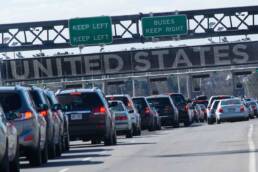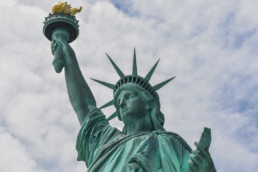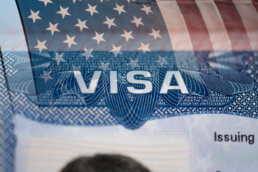The Department of Homeland Security has released the Entry/Exit Overstay Report for fiscal year 2016. The report provides data on departures and overstays by country, and it includes individuals who entered the U.S. as nonimmigrant visitors through an air or sea Port of Entry (POE) and were expected to depart in 2016. The in-scope population includes temporary workers and families, students, exchange visitors, temporary visitors for pleasure, temporary visitors for business and other nonimmigrant classes of admission. The report provides data on overstays in a brief snapshot of time. It does not provide the total estimated overstay population currently in the U.S. Rather, it includes only those foreign visitors who were expected to depart in FY16, and those who did not do so.
An overstay is any nonimmigrant who was lawfully admitted to the U.S. for a specified amount of time, but either stayed beyond that allotted period or failed to maintain their status. A lawful admission period ends when the nonimmigrant has accomplished the purpose of their visa or is no longer engaged in authorized activities relating to that purpose. In fiscal year 2016, Customs and Border Protection (CBP) processed 50,437,278 in-scope nonimmigrant admissions at U.S. air and sea POEs who were expected to depart. Of that total number, 739,478 overstayed and 628,799 are suspected in-country (no recorded departure). This represents an overstay rate of roughly 1.47 percent, and an in-country overstay rate at about 1.25 percent. Out of the nearly 50 million visitors, 21.6 million were part of the Visa Waiver Program (VWP) of which 147,282 individuals overstayed. Of the roughly 14 million non-VWP visitors, excluding Canada and Mexico, 287,107 overstayed the terms of their admission. In addition, 79,818 of the 1,457,556 students and exchange visitors scheduled to complete their program in the U.S. stayed beyond their authorized window for departure.
The overstay identification process is conducted through coordination with the DHS, CBP and third party carriers. It utilizes arrival, departure and immigration information to generate a complete travel history for individuals admitted to the U.S. Federal law requires air and sea carriers to provide CBP with passenger manifests detailing who is arriving to, or departing from, the U.S. CBP receives biographic manifest data for all travelers leaving the U.S., and then matches it against arrival data to determine who has complied with the terms of admission and who has overstayed. The DHS continues to improve its data collection procedures, and the report details a plan to use a facial recognition system to biometrically confirm the identity of departing travelers. In June 2006, a successful pilot program was deployed at Hartsfield-Jackson International Airport in Atlanta, and CBP plans to extend this biometric technology to an additional seven airports in the coming months.
If you enter the United States either as a visitor or in nonimmigrant status, it is important to be sure you are maintaining your status and not overstaying. If you are considering living or working in the United States, contact our office to schedule a consultation with one of our attorneys today!
Ready to have Berardi on your side?
Whether you’re a business looking to hire or a professional hoping to relocate, immigration law can be complicated. But you don’t have to do it alone. Put our experience to work for you.



